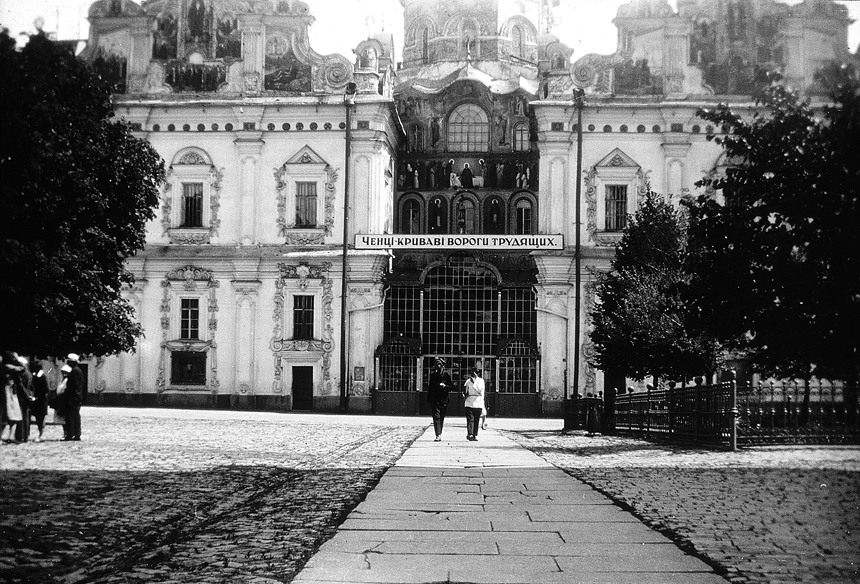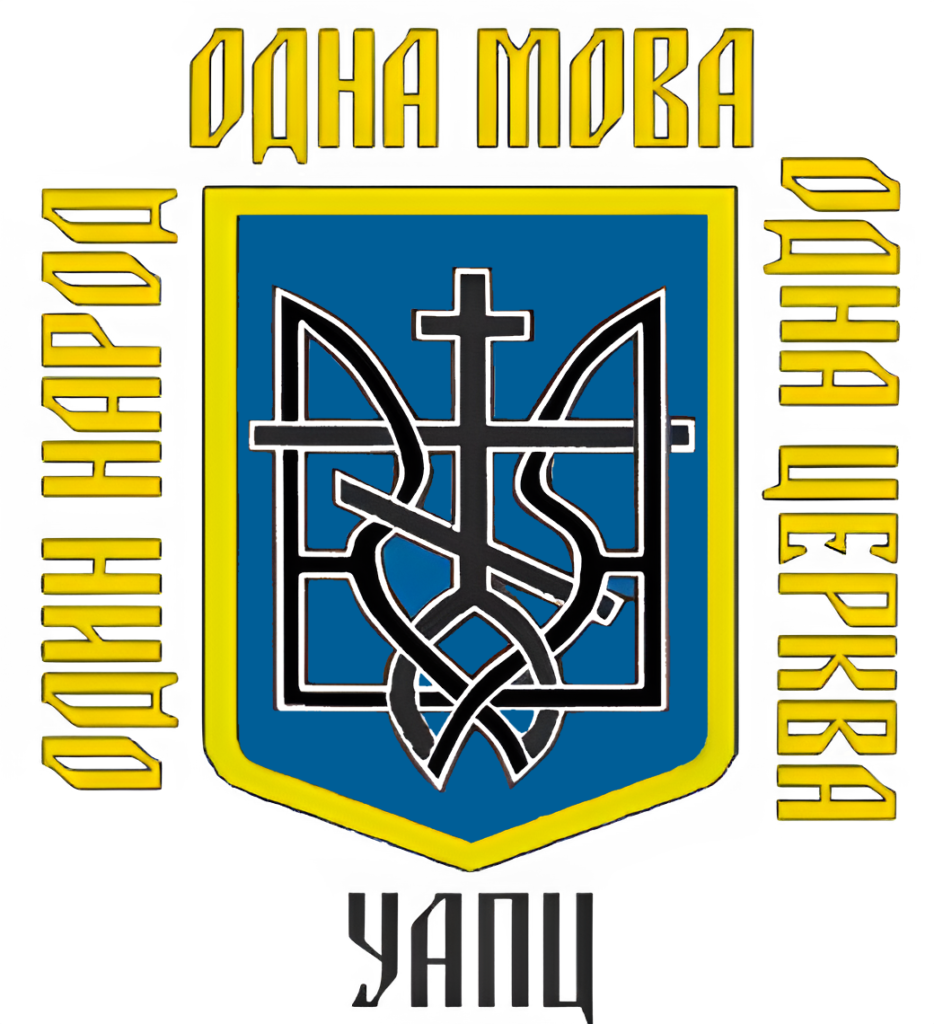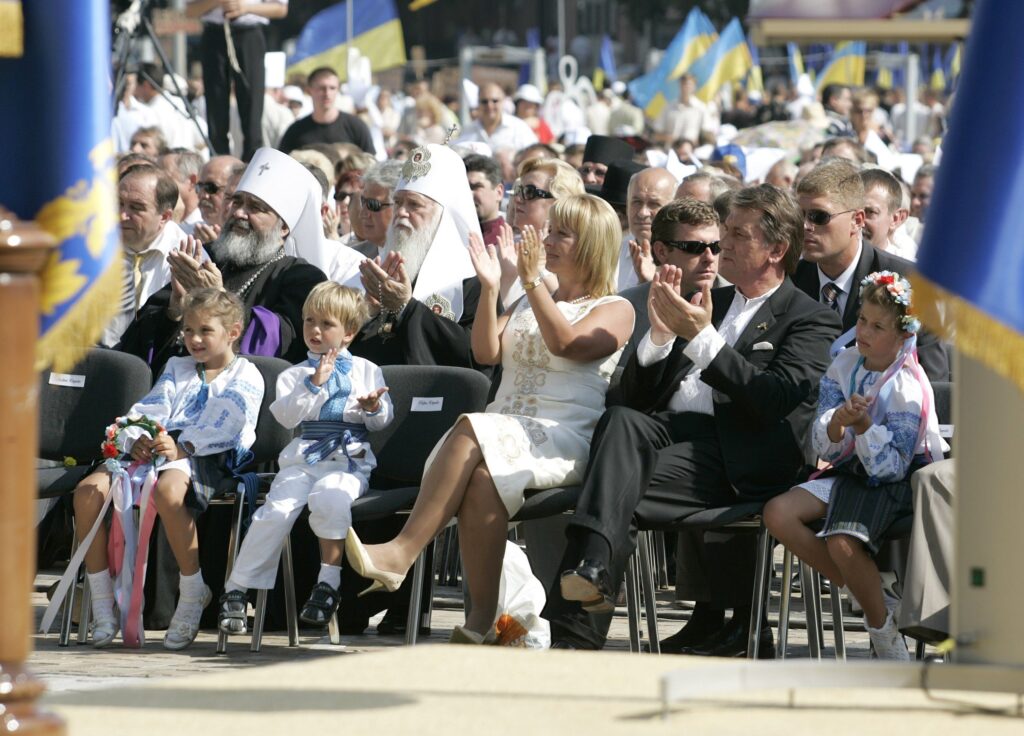By Kade Tibberts
The Eastern Orthodox Church considers itself one faith and one Church. Ironically, it is divided along national, political, and now militaristic lines. Within the umbrella of Eastern Orthodoxy are multiple autocephalous churches, which are self-headed, fully independent, and defined by national borders; and autonomous churches, which are functionally independent but the head is still appointed by another church.
The Russian Orthodox Church–also known as the Moscow Patriarchate (MP)–declared itself autocephalous in 1488 while Muscovy tried to gain its independence from Mongol rule. The next autocephalous churches appeared in the 19th century with the rise of nationalism in Greece, Serbia, Romania and Bulgaria. In the modern age, a church cannot just claim autocephaly; it must follow a canonical path in order to be accepted by the Orthodox World. The path for the Orthodox Church in Ukraine (OCU) to go from autonomous under the MP to autocephalous has been long and tumultuous for over a century.
The steps toward nationalization have become even more relevant in view of the War in Ukraine. Yet there still remain questions of its legitimacy, and even this canonical perspective differs from the common Ukrainian perspective. Ukrainians may accept the OCU, stay under the MP, or practice non-institutionalized spirituality. This essay will consider the history of the autocephalous movement in Ukraine, highlighting the response of both the Orthodox World and the Ukrainian people.
Since its inception, the movement toward autocephaly in Ukraine has been fraught with canonical illegitimacy. In 1917, the Russian Revolution prompted a series of Church Councils to discuss reforms and modernization of the Orthodox Church. Notably, while the All-Russian Council debated the use of Ukrainian in liturgy and other elements of nationalization in Ukraine, it decided to use Church Slavonic. In 1918, the UOC held their own All-Ukrainian Council and chose to remain autonomous under the MP and use Church Slavonic. These two councils confirmed the canonical status of the UOC as autonomous under the MP.
However, in 1921, another Ukrainian Church Council was held by intelligentsia, clergy and professors–notably without ordinary laity or Bishops. This politically motivated council pushed for Ukrainization and nationalism in the country. It created the Ukrainian Autocephalous Orthodox Church (UAOC) and ordained its own Bishops by having the council lay its hands on them in blessing. The Orthodox World rejected this creation as an improper “apostolic succession” because they ordained Bishops without a Bishop present. By ignoring a major tenant of Orthodox tradition, they received no recognition and would continue to stain the name of autocephaly with illegitimacy.
Soviet leaders originally allowed both Churches relative religious freedom under the promise of national self-determination, but the UAOC was eliminated completely in 1930 under Stalinist repression. Believers of the UOC-MP also faced oppression; nevertheless, the church itself survived.
The autocephalous movement revived during Nazi Occupation, thus associating the autocephalous movement with fascism. West Ukraine was absorbed into Ukraine with the Non-Aggression Pact. Prior to this, the Orthodox Church of Poland (now West Ukraine) was granted autocephaly through the Patriarchate of Constantinople in the 1920’s. The Patriarch of Constantinople argued that the Polish Ukrainian Church was already autocephalous as the successor of the Kievan Metropolis, and did not need to be granted autocephaly from Moscow. When this region was taken by the USSR, the Church rejoined the Moscow Patriarchate.
In 1941, the Nazis invaded and claimed they would grant independence to Ukraine. In response, the Pochayiv Council declared that the Ukrainian Orthodox Church was still autonomous, yet would begin the process of canonical autocephaly. This Council hoped for national independence and gradual autocephaly, while also attempting to shake off the illegitimacy of the 1921 Council. Some Orthodox Churches went ahead and declared themselves already autocephalous, thus creating the 2nd UAOC. In place of wanting to gain autocephaly from the MP, the 1942 UAOC saw themselves as the successor of the Autocephalous Orthodox Church of Poland, which had autocephaly via Constantinople.
Therefore, both the autonomous Church and autocephalous Church existed with canonical basis. Unfortunately, the 1942 UAOC chose to absorb the 1921 UAOC self-ordained bishops, thus causing the earlier stain of “improper apostolic succession” to spread to them. Moreover, the Soviet regime used propaganda to connect the 1942 UAOC to nationalism and fascism. Because the UAOC celebrated its “liberation” by the Nazis, Soviet officials referred to them as collaborators. The other Patriarchs could not accept the 1942 UAOC as canonical when it was associated with war against other Orthodox.

When the USSR re-invaded Ukraine at the end of World War II, the UAOC was completely suppressed. Despite Ukrainians hopes for national independence and thus autocephaly, political propaganda, war, and oppression eliminated both movements. The 1921 and 1942 UAOC was encouraged by political goals of nationalism, but this political aim was marred by its reputation with fascism.
Soviet state atheism and religious oppression continued in the Khrushchev era and after. In Eastern Ukraine, Khrushchev closed churches and Russified the people, severely limiting public religious participation. Yet, he felt he had less control over the nationalist tendencies of Western Ukraine. In order to encourage unity within the USSR, Western Ukraine was allowed a certain degree of Ukrainization, especially in the Orthodox Church.
Former Greek-Catholic Churches were particularly targeted for Ukrainization; in 1946, the Lviv Council reconciled the Greek-Catholic, Polish autocephalous and autonomous churches together as the Ukrainian Exarchate. The Soviets forced this decision upon the Greek-Catholics with coercion and arrests; while still outwardly complying, they maintained parts of their Greek-Catholic tradition and practice.
The church-life shifted toward the countryside, where Ukrainians continue to show parts of their unique cultural and national identity via religion. In this era, the MP encouraged the unity of Orthodoxy across many nations. It encouraged dialogue between the MP and its autonomous churches to create a shared identity as holy Kyivan Rus. The Ukrainian Exarchate officially said that the Soviets reunited them with their Slavic brethren; this further villainized the Polish, Roman Catholics, Nazis, and nationalists.
Postwar alignments in the Church reflected the ongoing Cold War divisions. The MP wanted to lead all Orthodox in the USSR as the “Eastern Bloc” Church, while Constantinople tried to represent the “Western Bloc” Church. The MP began a policy of internationalism and globalism that had inherent undercurrents of Russian superiority and imperialism. While the UOC in West Ukraine tried to protect its own sense of identity and culture, the MP hoped to Russify the Exarchate and bring it under its domination. These ideologies continue to the current day as Russian imperialism attempts to control Ukrainian self-determination.
Despite its questionable claims to legitimacy, multiple autocephalous churches revived during the collapse of the USSR. In 1989, the 3rd UAOC began in Western Ukraine. The Ukrainian Exarchate became the autonomous Ukrainian Orthodox Church under the MP (UOC – MP). Metropolitan Filaret (Denysenko) of the UOC – MP reunited some UOC parishes with some UAOC parishes, without official autocephaly via the MP. This then created 3 simultaneous churches: the 1989 UAOC (composed of churches in West Ukraine that did not unite with Filaret), the autocephalous Ukrainian Orthodox Church in Kiev (UOC – KP), and the UOC – MP.
In addition to the legacy of illegitimacy, the UOC-KP lacked canonical status and Patriarch Filaret was defrocked and then excommunicated by the MP. Some consider Filaret to be an egoist creating conflict for personal gain. Some do not care about the canonical status and consider Filaret a leader against colonial subordination under the MP. The UAOC and UOC – KP adopted pro-Western, progressive, nationalistic, and anti-colonial rhetoric. The UOC-KP in particular took influence from the North American Orthodox Church, which associated their faith with religious freedom and other “Western” values.
The autocephalous movement–now more than in the past–speaks of itself as protecting the national identity against an imperial force and an oppressor. It calls out the UOC-MP for its silence against the aggression and bloodshed by the Russian State, which is officially supported by the MP. Therefore, the UOC-KP gained support among Ukrainians not from its canonical status, but from its political and ethical values and Ukrainian national identity.
In place of belonging to one of these institutionalized religions, many Ukrainians now identify as “Just Orthodox.” Because religious practice was suppressed under the USSR, religious practice shifted into the private, personal realm. There are now multiple generations who were not raised in the Orthodox traditions of their ancestors. The “Just Orthodox” may believe in God and not attend any regular religious services; see themselves as Orthodox without believing in God at all; dislike the political connections of the Churches; be displeased with the disunity in faith; or prefer to be noninstitutionalized.
In her book Everyday Religiosity and the Politics of Belonging in Ukraine, Catherine Wanner defines “vernacular religion” as the typical person’s everyday practices that have a religious tone. Vernacular religion is not limited to the institutional space or theology, nor to an individual’s personal beliefs. Wanner does not choose a limited definition of religion, but studies anything involving faith, belief, or of Orthodox heritage. For example, Ukrainians often go to “Holy Springs” for bathing and rejuvenation; practice saint veneration; collect religious artifacts and icons; and pilgrimage to holy sites. Believers describe these places and objects as being “animated by prayer.” They are given religious power by the fact believers go there, even if they lack institutional recognition (and sometimes are officially heretical).
Vernacular religion also permeates the atmosphere of Ukrainian public spaces as “ambient faith.” Orthodoxy is as culturally Ukrainian as it is religious. Religiosity is a natural part of the Ukrainian landscape. Wanner provides the example of the inclusion of religious saints as part of a public state monument, or the emotional response that Ukrainians have when entering an Orthodox Church as evidence for this cultural religiosity. Orthodox elements appear as beautiful parts of public architecture, holy springs in public parks, shrines to political martyrs, and elsewhere. Ukrainians feel a connection to these religious elements, even if they do not believe. They were raised in a space permeated by Orthodox religiosity and thus see it as beautiful, meaningful, and distinctly Ukrainian.
Wanner further argues that a Ukrainian religious identity was able to solidify in the Maidan protests. Throughout the 1990s and 2000s, the UAOC and UOC-KP supported the pro-Western and anti-corruption politicians; the MP itself was anti-nationalist and pro ‘Slavic unity’; while the UOC-MP stayed uninvolved, neither pro or against Russia. Ethnicity, language, political opinion, and religion all divided different parts of Ukraine.
This changed in 2014 with the Maidan protests and subsequent invasion of Crimea and the Donbas region. The protests began with the Ukrainian people expressing discontent with the state of Ukraine; its political corruption; its low standard of living; and its poor economic outlook. Yet it quickly grew into a mass movement of what Wanner calls “radical hope.” The protesters hoped that the country could become something better and their lives would improve, thus charging the event with a religious atmosphere of belief in the future. Regardless of their ethnicity, language and religion, the protesters had a shared vision of a Ukraine centered around human dignity and equality.
When the police responded with violence, the UOC-MP opened its doors as a sanctuary. All mainstream religious organizations voiced their support of the protest as protectors of human dignity and denounced the police as violent. This stance marked a change in institutions, which previously sided with the state, instead began to serve the community and follow their selfless religious mission. The Orthodox beliefs of self-sacrifice, hope, and human dignity provided a general religious undertone to the Maidan protests that united the protesters.

This form of religiosity continued after the conflict in Donbas began. People built Orthodox-type shrines in Maidan Square for those killed by Russian troops, further honoring their sacrifice, vision and hope. In response to the conflict, many Ukrainians could no longer belong to the Church of an aggressor state. Thus vernacular religion and politics act hand-in-hand, as religiosity permeates the political space and politics influences people’s beliefs in turn.
In 2019, Patriarch Bartholemew reconciled the UAOC and UOC-KP and gave them canonical autocephaly via Constantinople, thus creating the OCU. They further cast aside their illegitimate status as Filaret agreed to step down as Patriarch. There is certain political contention between Patriarch Bartholemew and Patriarch Kirill, as Bartholemew advocates for moderately progressive policies, while Kirill advocates for “traditional values.” The rest of the Orthodox World does not recognize the OCU, as they see this as a contest between the MP and Patriarchate of Constantinople. They fight not only over dominance, but over the political vision of the Orthodox World. Regardless, the UCO currently has canonical autocephaly which is not fully acknowledged worldwide or among all Ukrainian people. Since the War in Ukraine, many parishes have voted to change from the UOC-MP to the UCO. Stressing the importance of laity participation, the true change happens at the parish-level as Churches switch over, as the canonicity remains an open question.
Autocephaly is inherently tied to the national identity of Ukraine. From the legitimacy standpoint, its autocephaly rests on historic arguments about the sovereignty of the Kyivan Metropolis. Propaganda in the Soviet period tried to present both nationalism and autocephaly as Nazi fascism. Today, the Russian State and MP villainize Ukrainian sovereignty and autocephaly as ploys to disunify “brother Slavs” and disconnect the Orthodox World. They see the War in Ukraine as a “Holy War” against the influences of the Satanic West in Ukraine, which are allegedly leading Ukrainians away from “true Orthodoxy” under the MP.
Vernacular religion presents a very different view of the issue. It does not unite them with Russia, but creates bonds between Ukrainians themselves. Orthodoxy helps to define Ukrainian national identity by giving Ukrainians a shared history, public spaces, and a vision for the future. Politically, vernacular religiosity connects Ukrainians as a diverse nation, across religious institutions, language, and ethnicity.
The imperial rhetoric of the MP cannot persist in Ukraine for long. The rhetoric about Slavic unity quickly falls apart as the Russian state continues to kill Ukrainian civilians and soldiers. Ukrainian national patriotism persists, as Ukrainians defend their sovereignty and identity against imperial domination. It would be nice to say that the Russian Orthodox Church could change their language and end their “Holy War.” Yet it is evident that this language is a continuation of a long history of Russian imperial dominance, from the imperial era to the USSR to the “internationalism” of the MP to its Russian World.
It is more likely that the UOC-MP will begin to take a stand against domination of the MP, or the Orthodox World itself will criticize the MP for encouraging the bloodshed of fellow Orthodox. The UOC-MP cannot remain silent or else it will continue to lose parishes and believers, as Ukrainians leave the institutionalized faith entirely. The future of the Orthodox Church in Ukraine rests on the outcome of the World, and on the international reaction to it. It is up to the UOC-MP if it responds to the voice of international and laity criticism.
Kade Tibberts is a senior majoring in Russian, East European, and Eurasian Studies



